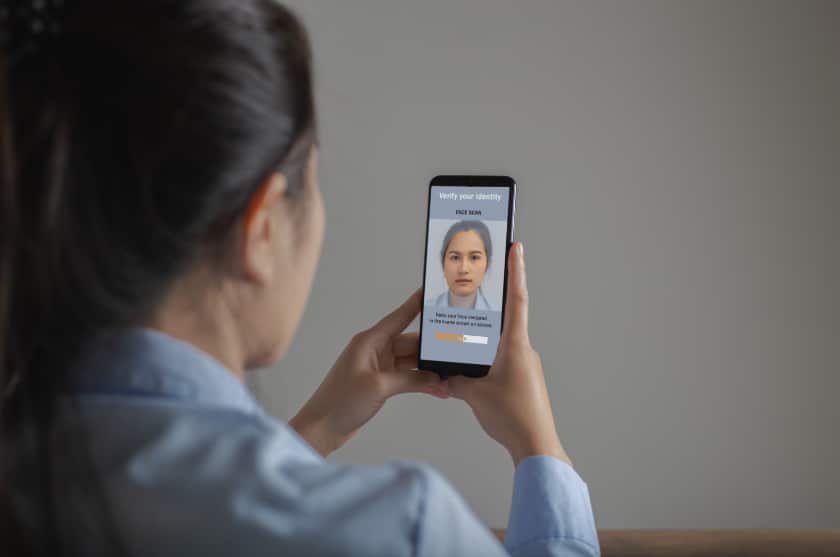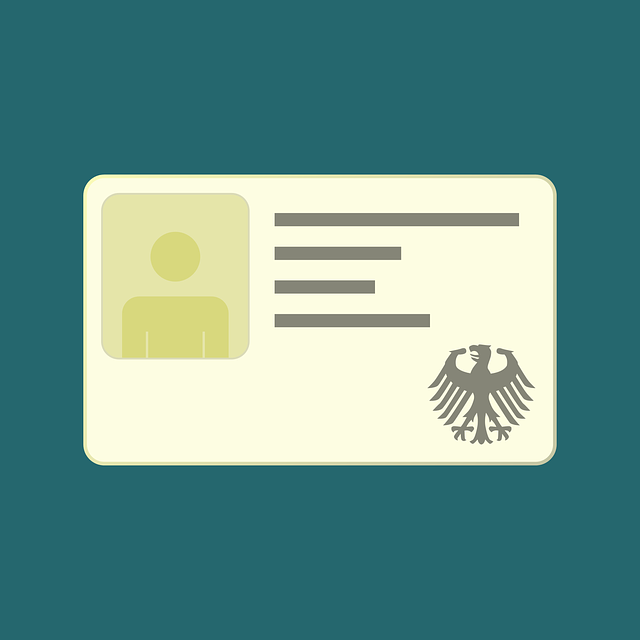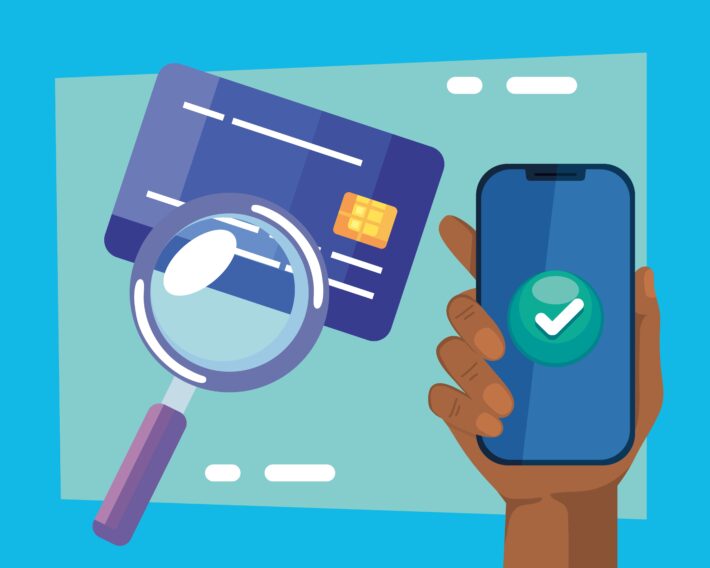Get Identity Verified: A Step-by-Step Guide

What is Identity Verification?
Definition of identity verification
Identity verification is the process of ensuring a person’s identity when opening a bank account, applying for a loan, or engaging in other financial processes. This important security measure is crucial in combating new account fraud, which can lead to significant financial losses and legal repercussions. Acceptable forms of identification for this process include a driver’s license, passport, and state ID.
By verifying identities, financial institutions can effectively implement Know Your Customer (KYC) protocols and bolster their anti-money laundering (AML) efforts. This not only helps in maintaining the integrity of financial transactions but also ensures compliance with regulatory standards for both financial institutions and government agencies, thereby fostering a secure and trustworthy financial environment.

Importance of identity verification in the digital age
Identity verification is paramount for assessing and monitoring customer risk. It is a key step in the account opening and customer onboarding process, allowing financial institutions to accurately verify the identity of an applicant and detect potential fraud.
This verification process ensures that only legitimate customers gain access to financial services, thereby safeguarding both the institution and its clients from fraudulent activities. As digital transactions become increasingly prevalent, robust identity verification measures are essential to maintain trust and security in the financial ecosystem.
Understanding Digital Identity Verification
How digital identity verification differs from traditional methods
Unlike conventional practices, digital identity verification brings the verification process to the online world, utilizing advanced technologies to detect identity fraud and determine if someone is truly who they claim to be.
Traditional methods often rely on physical documents and in-person checks, while digital verification employs biometrics, AI, and real-time data analysis to provide a faster, more accurate, and secure way to verify identities.
This shift to digital methods is essential in an increasingly online-centric world, where ensuring the authenticity of individuals is critical for preventing fraud and maintaining trust in digital transactions.
Benefits of digital identity verification (e.g. convenience, security)
Utilizing advanced methods such as biometric verification, face recognition, and digital ID document verification, digital identity verification streamlines the process of confirming identities online. This approach provides a seamless experience for users, allowing them to verify their identities quickly and effortlessly from anywhere, without the need for physical documents or in-person checks. Additionally, these methods enhance security by employing sophisticated technologies that are difficult to forge or bypass, thereby significantly reducing the risk of identity fraud. The combination of convenience and robust security makes digital identity verification an essential tool in today’s digital landscape.
The Identity Verification Process
Overview of the identity verification process
Digital identity verification process begins with the collection of something a person has, such as a biometric identifier (e.g., facial recognition) or an ID document. Users can also verify their identity using credentials from another government agency. This data is then compared against a verified data set, which could include government-held information or biometrics stored on a user’s registered mobile phone. The comparison process ensures that the individual’s presented identity matches the verified records, thereby confirming their authenticity. This method not only enhances the accuracy and efficiency of identity verification but also provides a secure way to prevent identity fraud and ensure that only legitimate users gain access to sensitive services and information.
Types of identity verification methods (e.g. ID document verification, facial biometrics)
There are various digital identity verification methods designed to ensure the accuracy and security of identifying individuals. These methods include biometric verification, which uses unique biological traits such as fingerprints or iris scans; facial comparison, which involves analyzing and matching a person’s facial features with stored images; and ID document verification, where official documents like passports or driver’s licenses are scanned and authenticated against a verified data set. Each method leverages advanced technology to provide a robust layer of security, making it increasingly difficult for fraudulent activities to succeed. By employing these diverse approaches, organizations can enhance their identity verification processes, ensuring that only legitimate users are granted access to their services.
How liveness detection works in identity verification
Liveness detection is a crucial component of facial biometric techniques in identity verification, designed to prevent spoofing attacks. This advanced technology works by distinguishing between live, physical faces and fraudulent representations such as videos, face masks, or photos of photos. Liveness detection algorithms analyze subtle cues such as facial movements, eye blinks, and skin texture to determine if the subject is a real, live person. By integrating liveness detection into facial biometric systems, organizations can significantly enhance their security measures, ensuring that only genuine users can successfully verify their identities and preventing unauthorized access through sophisticated spoofing attempts.

Identity Verification Methods
ID Document Verification
How it works
ID document verification is a digital identity verification method employed to ensure the legitimacy of an applicant’s Identity Documents This process involves capturing an image of the government-issued identity document, extracting the relevant data, and analyzing it for authenticity. Advanced technologies scrutinize various elements of the document, such as security features, holograms, and embedded data, to confirm its validity. By doing so, ID document verification not only authenticates the document but also detects potential fraud attempts, ensuring that only genuine documents are accepted. This method provides a reliable and efficient way to verify identities in various digital and physical transactions, enhancing security and trust.
Types of documents accepted
Various types of documents are accepted for identity verification purposes, including driver’s licenses, state IDs, and passports. These government-issued documents are commonly used due to their widespread recognition and the stringent processes involved in their issuance. Driver’s licenses and state IDs provide essential personal information and are equipped with security features to prevent tampering. Passports, often considered the gold standard for identification, include multiple layers of security such as biometric data and holographic images. By accepting these types of documents, identity verification systems can leverage their robust security measures to accurately and securely verify an individual’s identity, thereby reducing the risk of fraud and ensuring the integrity of the verification process. ScreenlyyID is capable of checking nearly 14000 document types.
Facial Biometrics for Identity Verification
How it works
Facial biometrics for identity verification involves the use of advanced algorithms to extract unique biometric data from a facial image and compare it against a verified data set. This process begins by capturing a facial image, either through a camera or an uploaded photo. The algorithms then analyze various facial features, such as the distance between the eyes, the shape of the nose, and the contours of the jawline, to create a biometric template. This template is compared with a verified data set, which may include previously captured and authenticated facial images. By determining if the two images are from the same individual, facial biometrics ensure a high level of accuracy and security in identity verification, preventing unauthorized access and reducing the risk of identity fraud.
Benefits for fraud prevention
Facial biometrics for identity verification offer significant benefits for fraud prevention by providing an additional layer of trust in the verification process. This method ensures that a remote user is indeed the same person who presented the ID document, thus preventing identity theft and fraudulent activities. By using advanced algorithms to analyze and match facial features, biometric verification makes it extremely difficult for imposters to deceive the system with fake IDs or photos. This heightened level of security not only deters potential fraudsters but also enhances the overall reliability and integrity of the verification process, fostering greater trust and confidence in digital transactions.

Why is Identity Verification Necessary?
Protection of privacy and security
Digital Identity verification is essential for protecting privacy and security in today’s digital world. It plays a crucial role in remote onboarding, new account openings, and lending processes, significantly enhancing the customer experience by streamlining these procedures. By ensuring that individuals are who they claim to be, digital identity verification helps financial institutions detect application fraud and fight fraud in real-time. This proactive approach not only safeguards personal information but also maintains the integrity of financial transactions, reducing the risk of identity theft and fraudulent activities. As a result, identity verification is a vital component in building trust and security in digital interactions.
Compliance with regulations and standards
Compliance with regulations and standards is crucial for digital identity verification solutions, ensuring they meet the stringent requirements set by authorities worldwide. For instance, the Anti-Money Laundering Directive (AML5) in Europe and the Electronic Identification, Authentication and Trust Services (eIDAS) regulation establish robust frameworks for digital identity services. In the United States, financial institutions are governed by laws such as the Customer Identification Program (CIP), which mandates thorough identity verification processes to prevent fraud and enhance security. Adhering to these regulations not only safeguards businesses but also builds trust and confidence among users and stakeholders.
Prevention of fraud and identity theft
Identity verification plays a crucial role in preventing identity theft and fraud by ensuring individuals are who they claim to be. By employing advanced verification techniques and adhering to strict regulatory standards, businesses can effectively protect their systems and users from fraudulent activities. This not only enhances security but also fosters trust and reliability in digital interactions.
Identity Verification Online
Step-by-step guide to online identity verification
To verify your identity online, you’ll need to provide a photo of an identity document such as a driver’s license, state ID, or passport and take a selfie with a smartphone or computer with a webcam.
Tips for a smooth identity verification process
Make sure your identity document is not expired and is a government-issued ID. When submitting your document, use a clear and well-lit photo to avoid any delays or rejections. Proper preparation can help streamline the verification process, making it quicker and more efficient.
Common issues and troubleshooting
If you encounter issues during the verification process, try restarting the process or contacting the partner agency’s help center for support.
Regulations and Standards for Identity Verification
Overview of relevant regulations (e.g. GDPR, KYC)
Notable regulations include the General Data Protection Regulation (GDPR), which mandates strict data privacy and protection measures for handling personal information in the European Union, and Know Your Customer (KYC) requirements, which financial institutions must follow to verify the identities of their clients.
These regulations set comprehensive standards for digital identity verification solutions, ensuring that personal data is handled responsibly and that identity verification processes are robust and effective in preventing fraud and maintaining trust.
Industry standards for identity verification
Standards for identity verification, such as AML5 and eIDAS, set stringent guidelines to ensure secure and reliable digital interactions.
AML5 (Anti-Money Laundering Directive 5) requires robust verification processes to prevent financial crimes in the EU.
eIDAS (Electronic Identification, Authentication and Trust Services) establishes standards for electronic identification and trust services, ensuring interoperability and security across EU member states.
Importance of compliance for businesses and individuals
Compliance with these regulations and standards is crucial for both businesses and individuals to prevent fraud and identity theft.
By adhering to guidelines mentioned such as AML5, eIDAS, GDPR, and KYC, businesses ensure the security and integrity of their operations, building trust with their customers.
For individuals, compliance means their personal information is protected, reducing the risk of identity theft and financial loss. Overall, strict adherence to these regulations fosters a secure environment for digital transactions and interactions, benefiting all parties involved.
The Future of Digital Identity Verification
Trends in digital identity verification
The future of digital identity verification is shaped by emerging technologies such as advanced biometric verification and artificial intelligence.
These innovations promise to enhance security and accuracy in verifying identities, making processes faster and more reliable.
Emerging technologies in identity verification
Future technologies will include;
- Biometric Verification: Utilization of fingerprints, facial recognition, iris scans, and voice recognition to provide unique and secure identification.
- Artificial Intelligence (AI): AI algorithms will enhance the accuracy and efficiency of identity verification by analyzing large datasets and identifying patterns that indicate fraudulent activities.
- Blockchain Technology: Blockchain will offer decentralized and tamper-proof identity records, ensuring secure and transparent verification processes.
- Machine Learning (ML): ML models will continuously improve by learning from new data, helping to detect and prevent sophisticated fraud attempts.
- Mobile and Remote Verification Tools: Mobile apps and remote verification technologies will enable users to verify their identities conveniently from anywhere in the world.
- Multifactor Authentication (MFA): Combining multiple verification methods (e.g., biometrics, passwords, and security tokens) to enhance security.
- Behavioral Biometrics: Analyzing patterns in user behavior, such as typing speed and mouse movements, to verify identity.
- Internet of Things (IoT): IoT devices will contribute additional data points for verifying identities in smart environments.
These technologies will collectively enhance the security, accuracy, and convenience of identity verification in the future.
Potential applications of advanced identity verification methods
Advanced identity verification methods have the potential to revolutionize the way we access services and conduct transactions online. This could cover industries such as real-estate, workplace security, smart cities, education, finance, healthcare and more.




